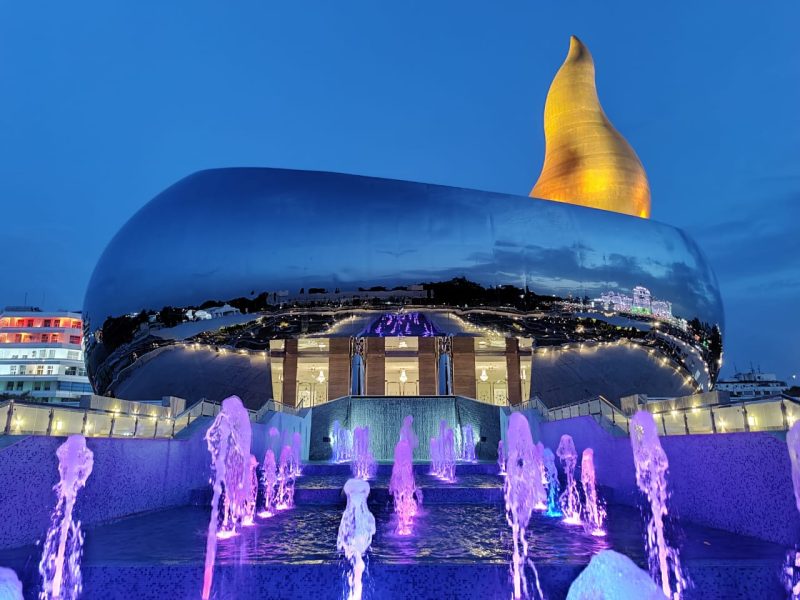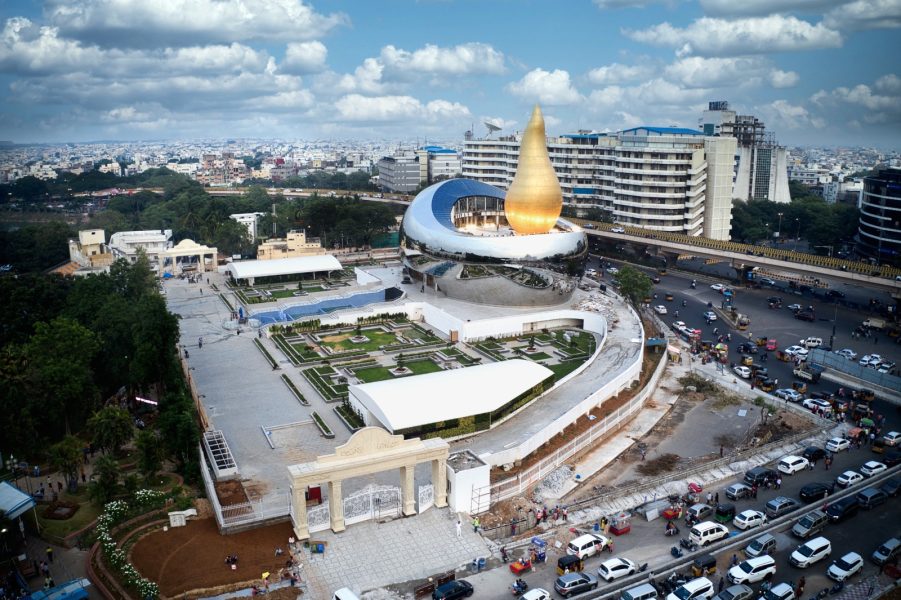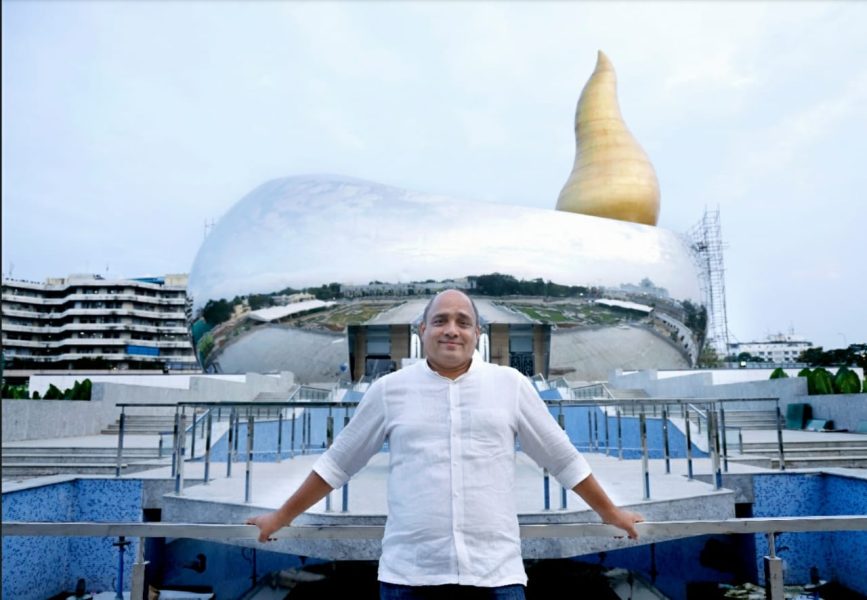
Telangana: KCR to inaugurate Martyrs' Memorial today; here's why it is unique

Telangana Chief Minister K Chandrasekhar Rao on Thursday (June 22) will inaugurate a massive memorial dedicated to about 1,600 martyrs who sacrificed their lives for the statehood movement.
As many as 369 people died in the first phase of the movement that rocked Andhra Pradesh between 1969 and 1972, while 1200 hundred people are said to have sacrificed their lives in the recent phase of the movement between 2001 and 2014, which finally culminated in the formation of the Telangana state in 2014. This is the second such memorial for the martyrs of the Telangana statehood movement. The existing one is the memorial at Gun Park.
While many protesters in the first phase died in police firing, in the second phase, which was by and large a peaceful movement, the youth, mostly students, self-immolated themselves, protesting the delay in the creation of the Telangana state.
Also read: How amateur historians are lifting the dust off Telangana’s glorious history
World’s biggest seamless structure
Considered the world’s largest seamless steel structure, the ‘diya’ (lamp)-shaped memorial has come up in the close vicinity of two important landmarks – the new Secretariat complex and the 125 ft tall statue of Dr BR Ambedkar. Both symbols of new Telangana, were inaugurated in April 2023.
The structure which is 26 m-tall on one side and 18 m on the other has been built on a sprawling 3.29 acres at a cost of ₹180 crore near Lumbini Park in Hyderabad. The height of the diya’s flame, painted in gold and yellow, is 26 m from the terrace of the six-floor structure and has a total built up area of 2,88,461 sq ft.

The building houses a museum, a convention hall, an exhibition dedicated to the movement, a theatre, and a restaurant.
According to the officials, about 100 MTs of 4mm-thick stainless steel was used for cladding and 1,500 MTS of structural steel has gone into the civil works. The minister said that high defined carbon steel was imported from Germany for the construction work.
Of the six floors, two basement floors are meant for parking.
‘Statehood movement was reborn here’
Talking about the significance of the location chosen for the memorial, state Road and Buildings Minister Vemula Prashanth Reddy, who supervised the project, said it was in this very locality – in a building named Jala Drushyam – that the spark for the second phase of Telangana movement in the form of Telangana Rashtra Samithi, was ignited.
Jala Drushyam, no more now, was the residence of veteran freedom fighter Konda Laxman Bapuji. He was the first minister to quit the cabinet in 1969, demanding statehood for Telangana.
Also read: Why statehood movement heads feel ‘national leader’ KCR should support them
KCR had floated the party at a small gathering in Jala Drushyam in 2001.
The chief minister is slated to inaugurate the building in a colourful function at 6.30 pm on Thursday. The programme will commence with the arrival of 6,000 artistes who would reach the venue in a procession from the nearby Ambedkar statue.
After the inauguration, KCR will preside over a meeting where 10,000 people will pay tributes to the martyrs by lighting diyas.
‘Gun Park memorial kept Telangana spirit alive’
The other martyrs’ memorial at Gun Park has a long history. The memorial was planned for the 369 martyrs after the first phase of the movement was called off. Gun Park which is located opposite the state Legislative Assembly was chosen as the site.
Erecting the 25 feet obelisk itself became a herculean task for the leaders of the statehood movement amid opposition from the ruling Congress. Finally, on February 23, 1970, the leaders of the movement hoodwinked the police to clandestinely lay the foundation for the memorial, leading to the arrest of leaders like Dr M Chennareddy.
The beautiful memorial, designed by A Yadagirirao, a retired professor of sculpture from JNTU Fine Arts College, came into existence in 1974. The memorial was designed to carry the message of sacrifices of 369 youth from the nine districts of the region. The black granite at the bottom symbolises mourning while the bullet marks on four sides of ‘stupa’ represent the police firing. The stupa tapers into a lotus that symbolises youth and immortality.
The sacrifices of the 1969 movement was the driving force for the second phase of the movement. According to noted writer Divi Kumar, it was the practice of paying tributes at Gun Park memorial that kept the flame of ‘Telangana spirit’ alive even though there was no movement for 30 years.
Also read: BJP at doorstep: Time for TRS to look beyond milking ‘Telangana sentiments’
“The tradition of paying tributes to martyrs in the Telugu state began following sacrifices made during the Telangana Armed struggle that the communists waged against the Nizam,” Divi Kumar, who also edited well-respected Leftist literary magazine Praja Sahiti, said.
So, KCR, as the leader of the movement, thought of erecting a befitting memorial for all the martyrs of Telangana movement after achieving statehood.
Design borrowed from rural culture
MV Ramana Reddy, who designed the memorial, said the idea of ‘jyothi’ (diya) was borrowed from Telangana rural culture where amorphous goddesses are worshipped.
“Our goddesses don’t have shape. They are simple boulders or wooden logs without any carving. After studying memorials in about 80 countries, where they are either complex sculptures or complicated art forms, I thought diya is the right choice as it represents the essence of martyrdom in its simplicity. Diya is used across all cultures as symbolism for life after death. The sacrifices of the martyrs should radiate inspiration for ages. To represent Telangana’s simplicity, I have gone for a diya devoid of any ornamentation,” said Reddy, who honed his skills in Germany’s Schelklingen for many years.

A product of Hyderabad’s JNTU(FA) College, Reddy also actively participated in the movement.
Speaking about the uniqueness of the new memorial, Reddy said he has combined two elements i.e. the memorial and the museum, which are normally two separate entities in many countries.
“In many countries, the memorials are in the form of sculptures and museums are not a part of them. So, visitors at these memorials would disappear after a few minutes. In Hyderabad, we have integrated a museum, a theatre, a cafeteria with the memorial to provide visitors a space where they can discuss and ponder over the heroic agitation and recall the sacrifices made for the statehood movement,” he said.
Part of popular culture
According to Karli Srinivasulu, a retired Political Sciences professor from Osmania University, paying tributes to martyrs has become an important element in the popular political culture of Telangana.
He said the inauguration of a modern and sprawling martyrs’ memorial in a high-security zone near the new Secretariat complex would not in any way diminish the importance of the simple obelisk built at Gun Park near Assembly.
Also read: In KCR’s ‘Golden Telangana’, the young are desperate for jobs
“All political activities – protests, processions, political gatherings connected to joining a new party or leaving a party, launching a new party – invariably begin from the Gun Park memorial. The Gun Park memorial will continue to represent the people’s culture as such activities may not be allowed at the new memorial. It may flourish as an attractive hangout joint for tourists while keeping the memories of statehood movement and sacrifices alive,” Karli said.
He said the tradition of building memorials has been initiated by Communist party after the 1952 election in which the party emerged as a big force and restrictions on it were lifted.
“In the memory of those who laid down their lives in the armed struggle against the Nizam, the Communist party started building memorials which were simple structures. The tradition picked up with the advent of the Maoist movement in the 1970s. Hundreds of Naxalites were killed by the landlords or the police. Then the Marxist-Leninist party started constructing obelisks to keep the inspiration alive. Hundreds of memorials dot rural Telangana even now, despite their demolition by police and landlords. The practice was borrowed by the leaders of Telangana movement to inspire the youth following the death of hundreds of people in police firing between 1969 and 1972,” Karli added.
Also read: Shah spins anti-Nizam narrative, but Telangana looks the other way

